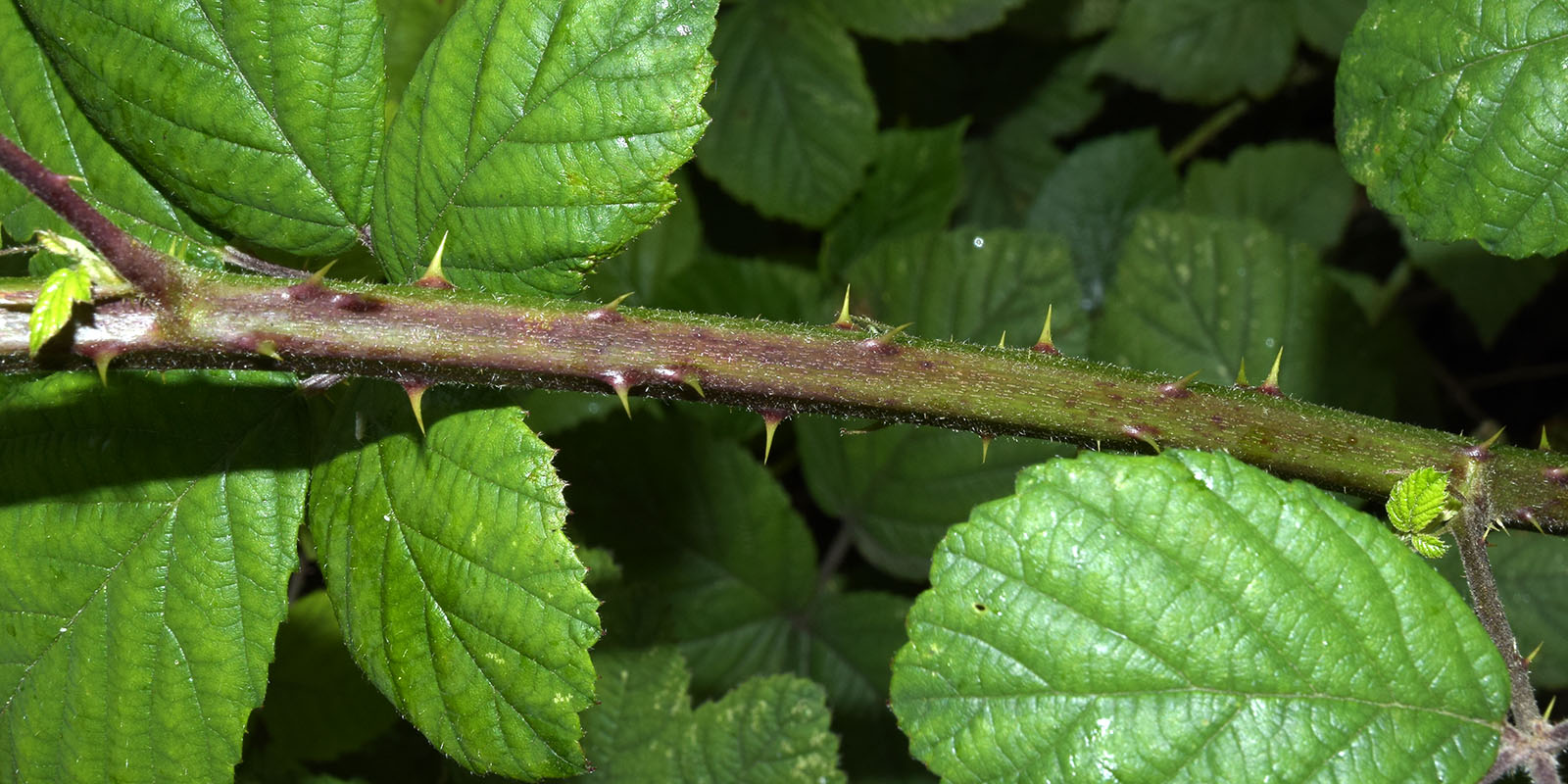
Rubus caesarius – Series Vestiti
back to Alphabetical index · Taxonomic index
A typical-looking member of the Vestiti with pink flowers, rounded leaflets and thinly hairy stem. Stalked glands are few on the stem and more numerous in the panicle. It bears a passing resemblance to R. vestitus. It was described and named by David Allen in a Watsonia paper in 1994 along with three other species which were all recorded from southern England and the Channel Islands. R. caesarius is named after an old Roman name for the island of Jersey, where it is abundant; however, it is rare or absent from the other islands and may be a relatively recent arrival. Thinking it had probably come from France, David Allen searched for it during his regular visits to Normandy and Brittany without success but found a well established population at Park Gate in southern Hampshire from where these photograpyhs were taken. This is the only British site so far known, but it is hoped that the publication of these photos will enable other bramble enthusiasts to find further colonies, either in the UK or elsewhere in Europe.

When well developed the main part of the panicle consists of a compact, non-leafy cylinder or narrow pyramid of flowers on short, stout, nearly patent peduncules, which become a little longer lower down and often have one or more single or trifoliate leaves at the base. The rachis and floral branches are densely pubescent, greyish due to the hairs or purplish in colour, with scattered to fairly frequent fine and relatively weak and inconspicous prickles which are variable in length. There may also be scattered short-stalked glands, acicles and pricklets (sometimes gland-tipped). Longer divaricate flowering branches with trifoliate leave may also occur at the base of the panicle; these are sometimes well developed and similar to the main inflorescence.
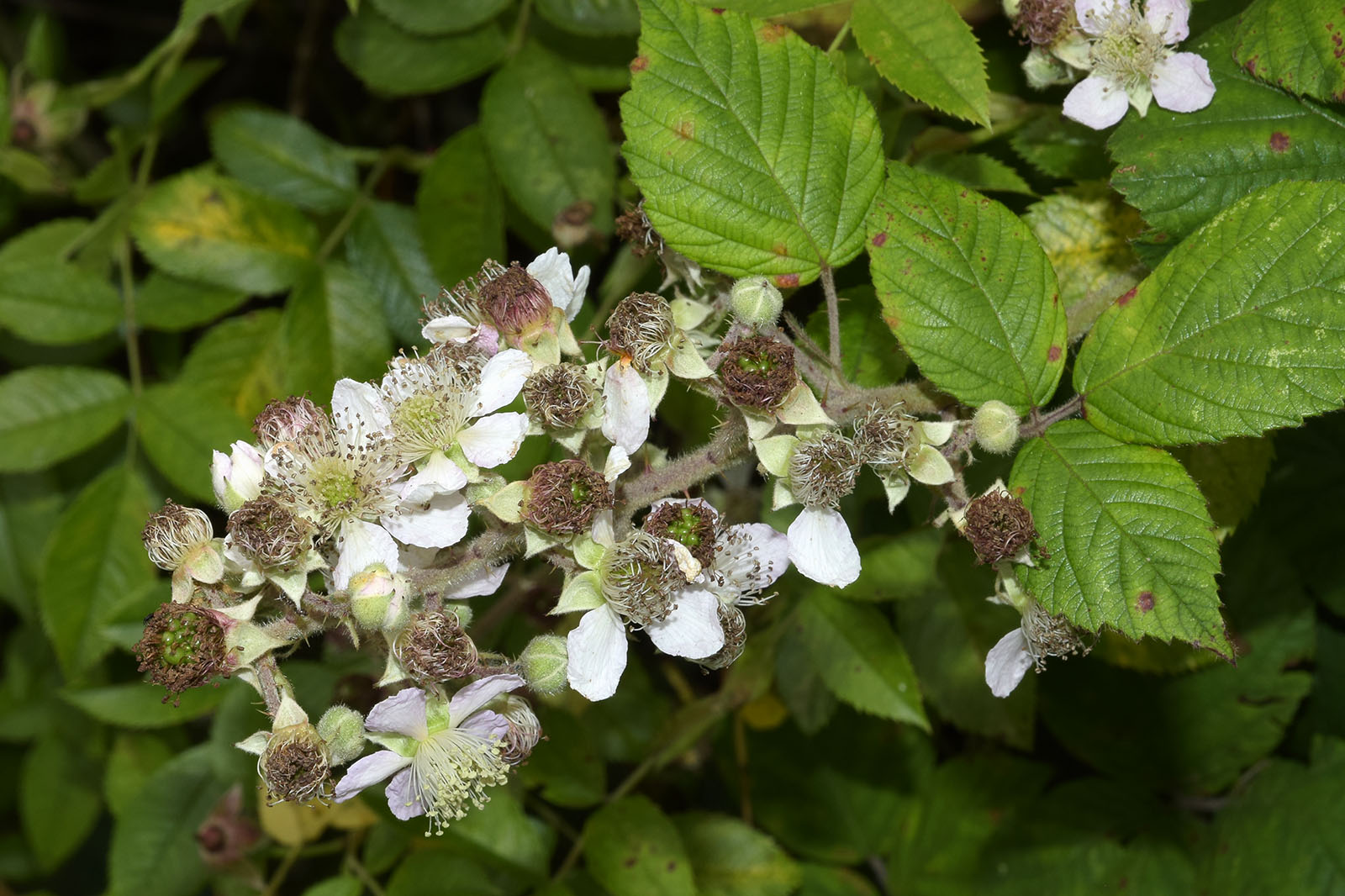
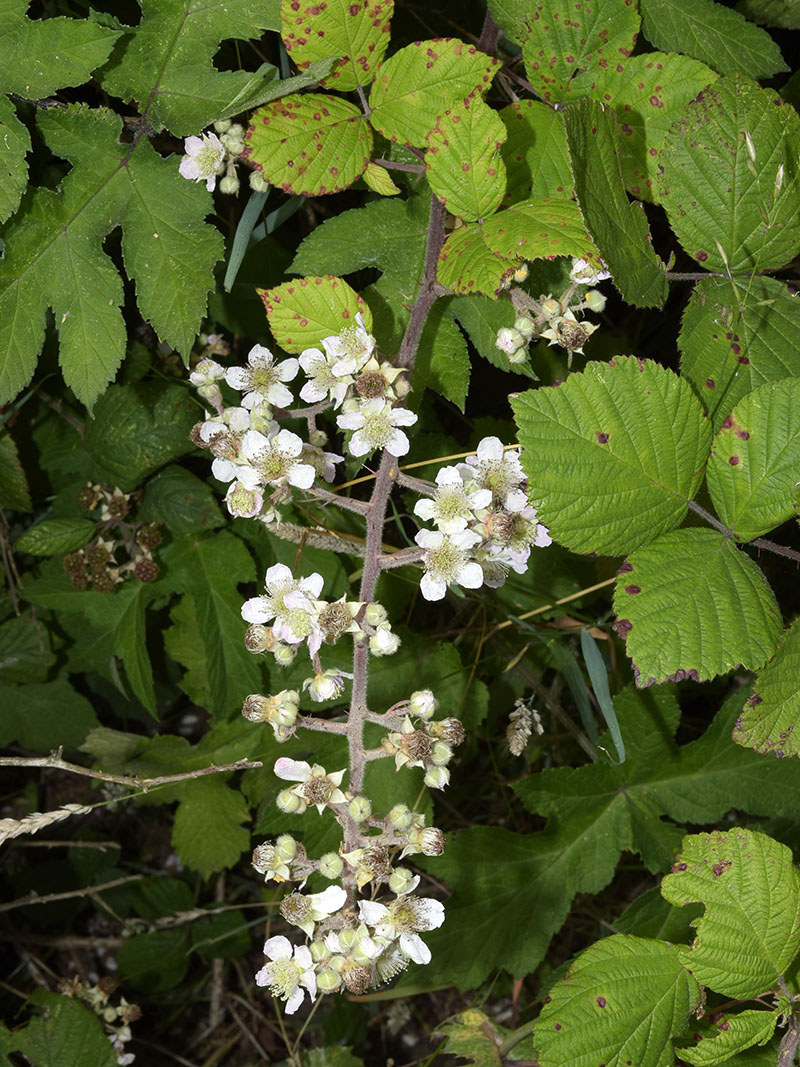
A panicle growing in shade. The panicle leaflets are relatively thin and flat, with shallow toothing like those on the stem.
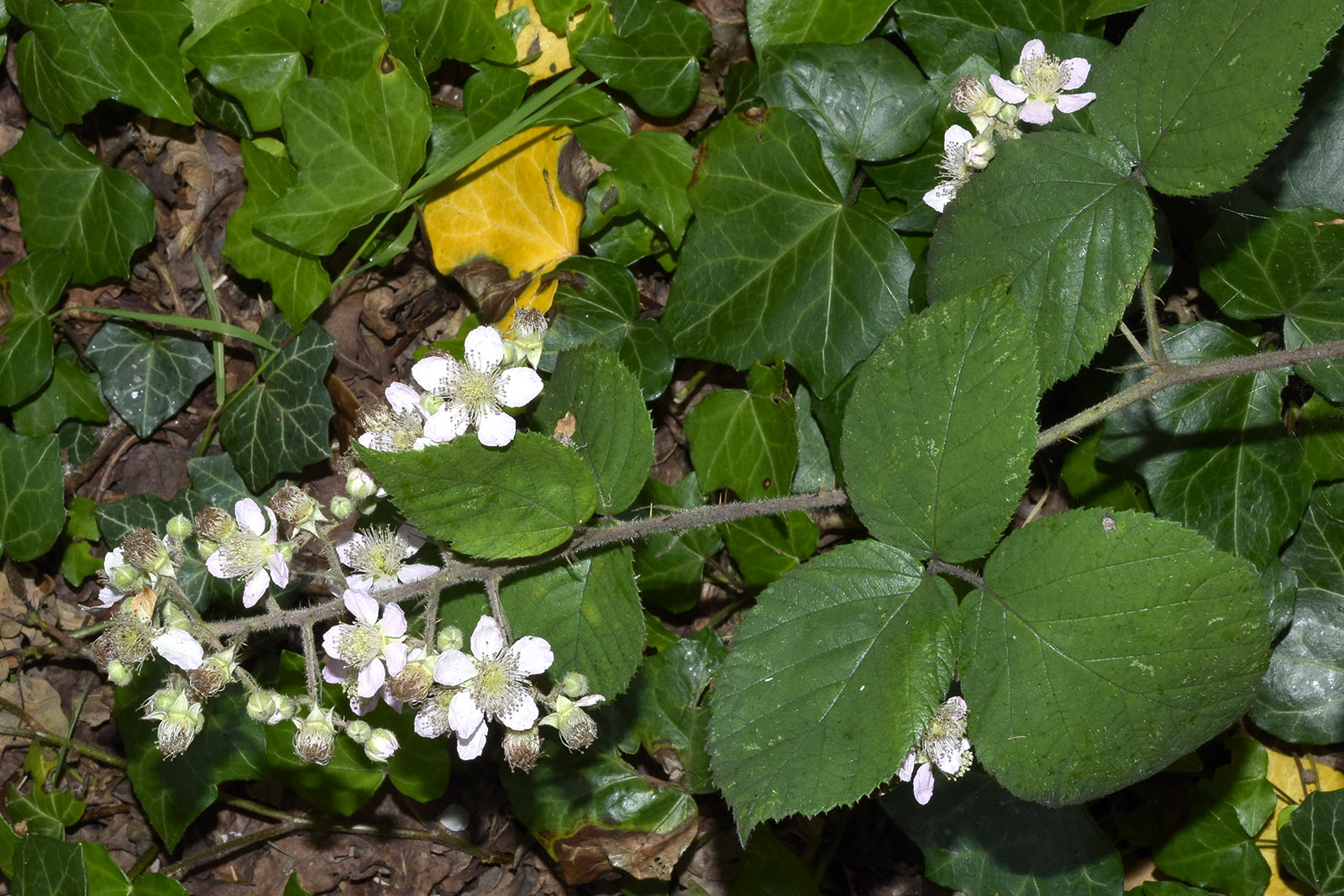
Part of the rachis. Some short-stalked glands and small pricklets are just visible.
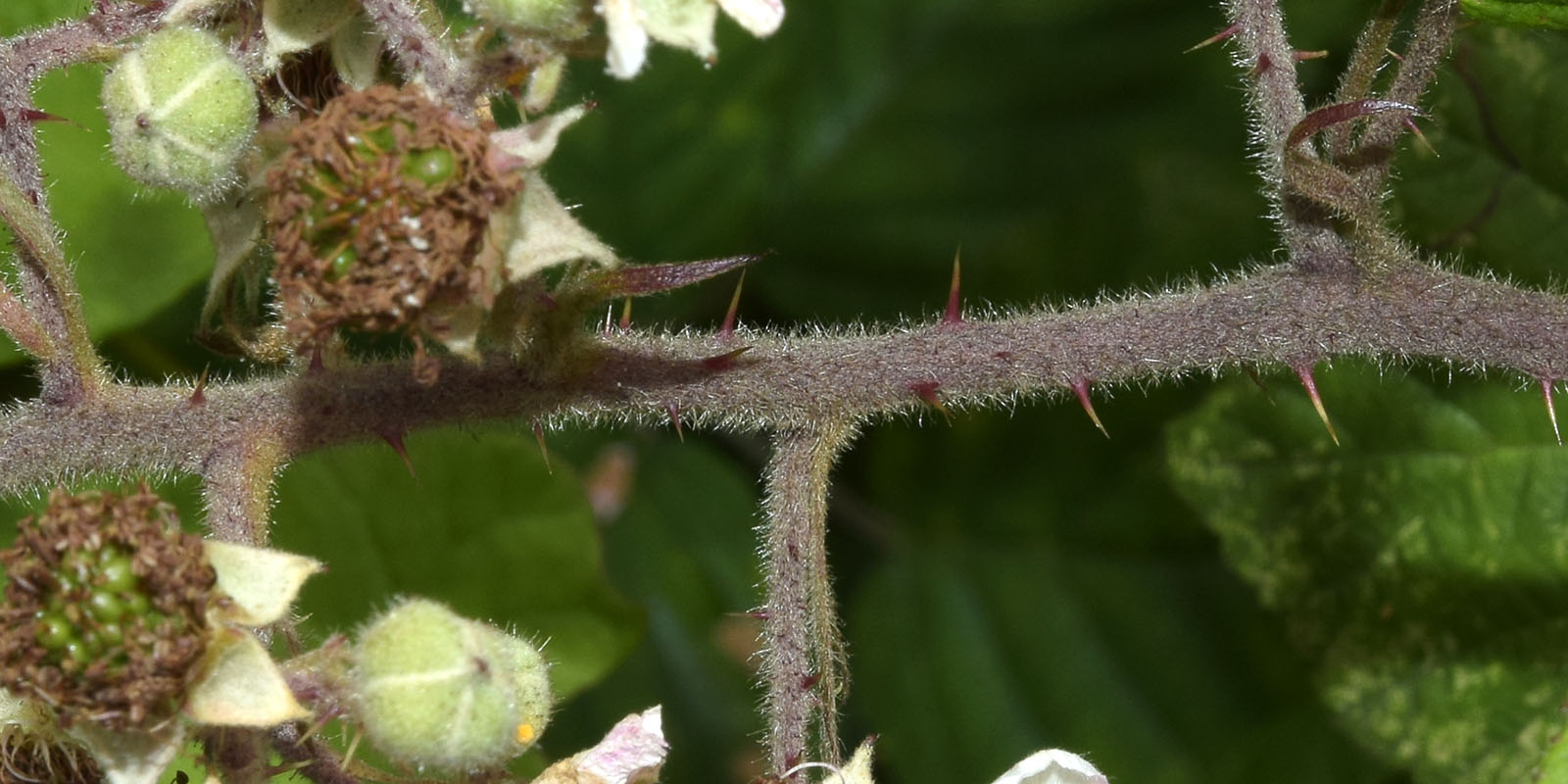
The published description gives the diameter of the flowers as 2-2.5cm with the petals 9-10 x 5-6mm, pale pink (bleaching almost white), elliptical-obovate to nearly round. The larger petals in these photographs probably measure 12 x 8mm. Stamens are longer than the styles, which are greenish with yellow tips. The young carpels are described as hairy, with the receptacle glabrous.
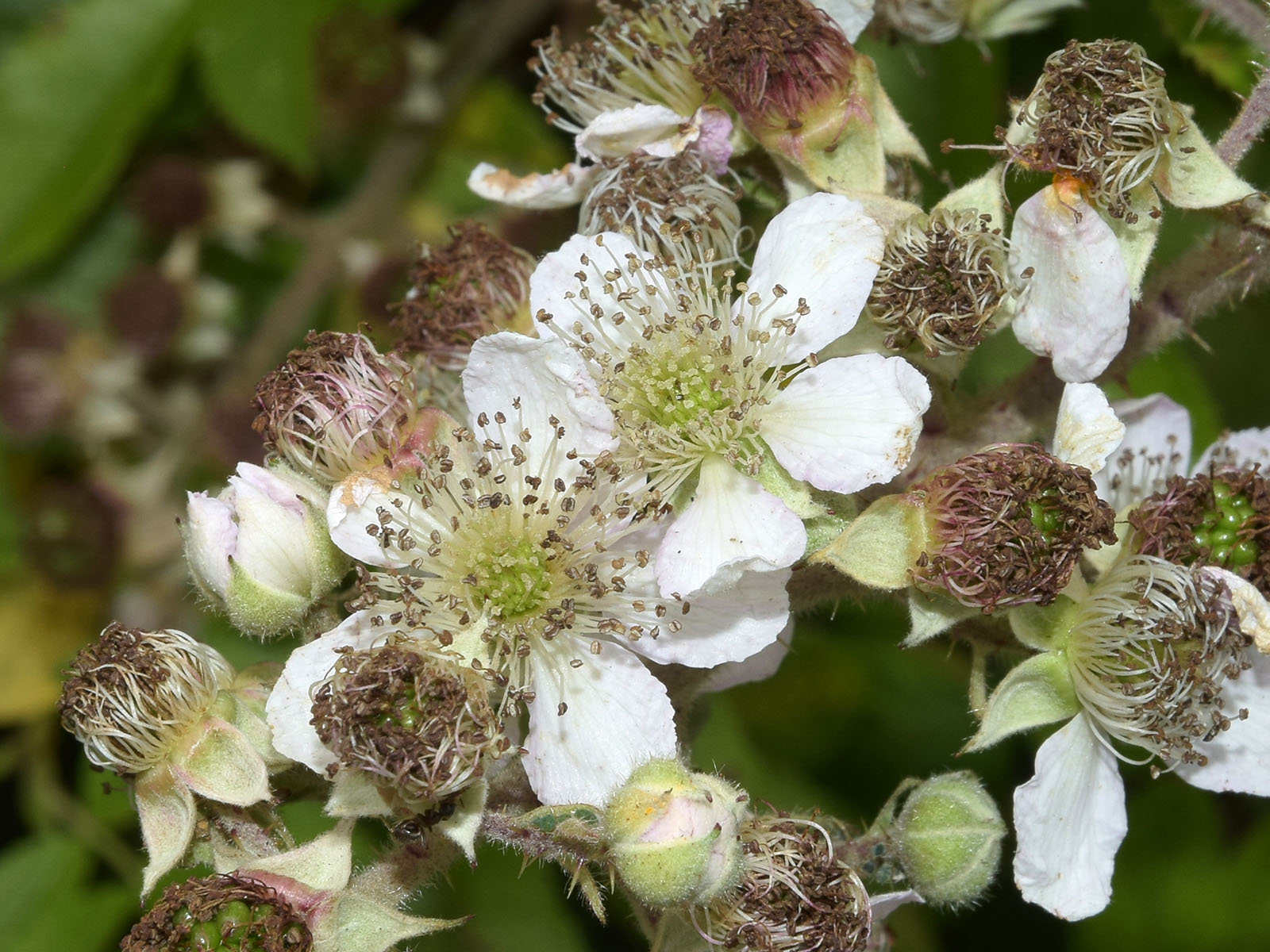

Sepals are felted with abundant longer hairs, scattered short glands and acicles. They are usually short-pointed and have pale margins, are loosely reflexed in flower and fruit, concave with patent or upturned tips.

Leaves have five mid-green leaflets, which in the open become a sickly pale yellow-green colour (i.e. as if lacking in chlorophyll). They are matt and glabrescent above, have quite prominent veins and become rugose when growing in more exposed situations (with the tertiary veins impressed) - so appear somewhat similar to the leaflets of some Corylifolian species. The terminal leaflet is about as long as broad, 5-7 x 4-6 (or sometimes much larger), oblong or nearly round in shape, with an irregular shallowly-toothed (dentate to serrate) margin, a short cuspidate to acuminate apex and an emarginate base.
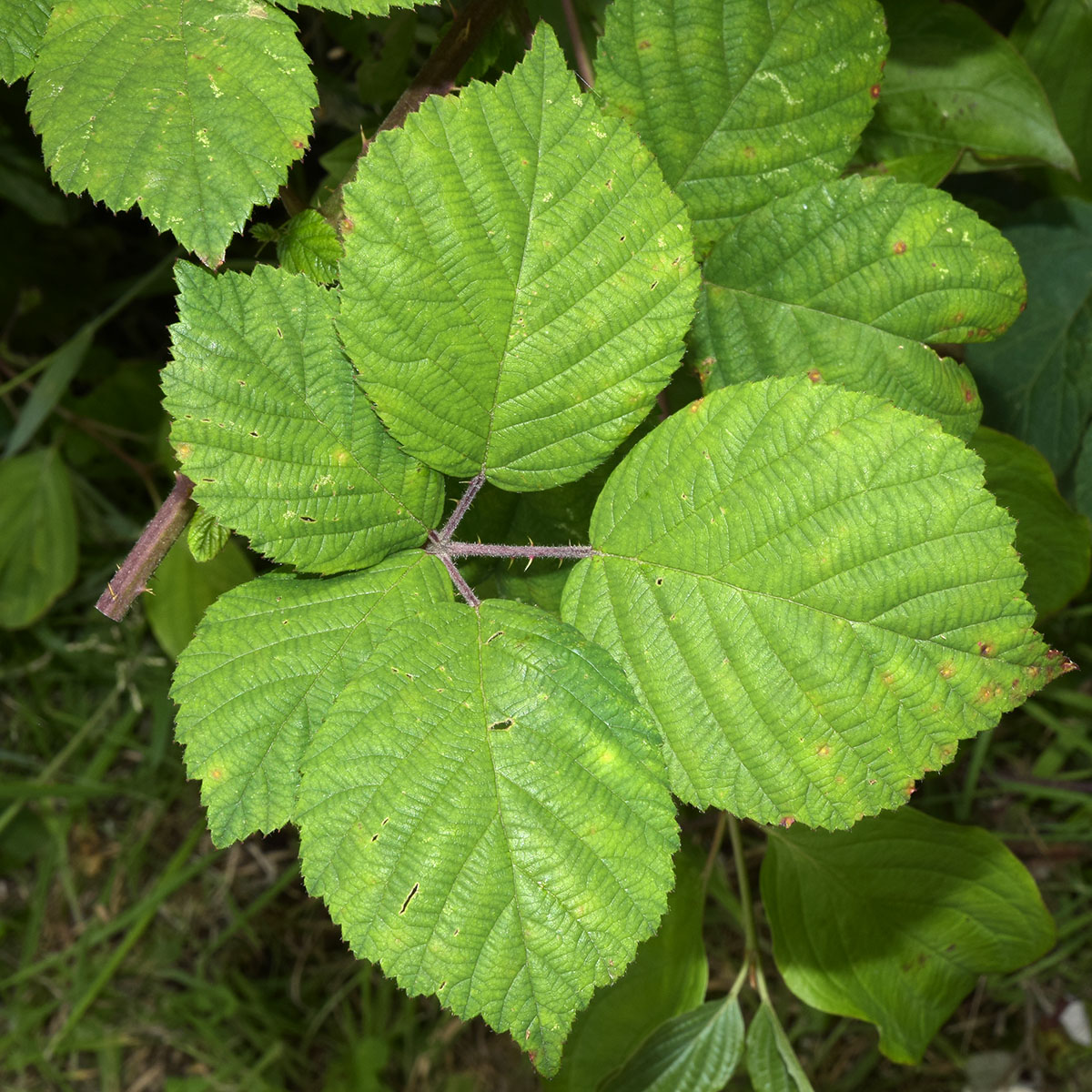
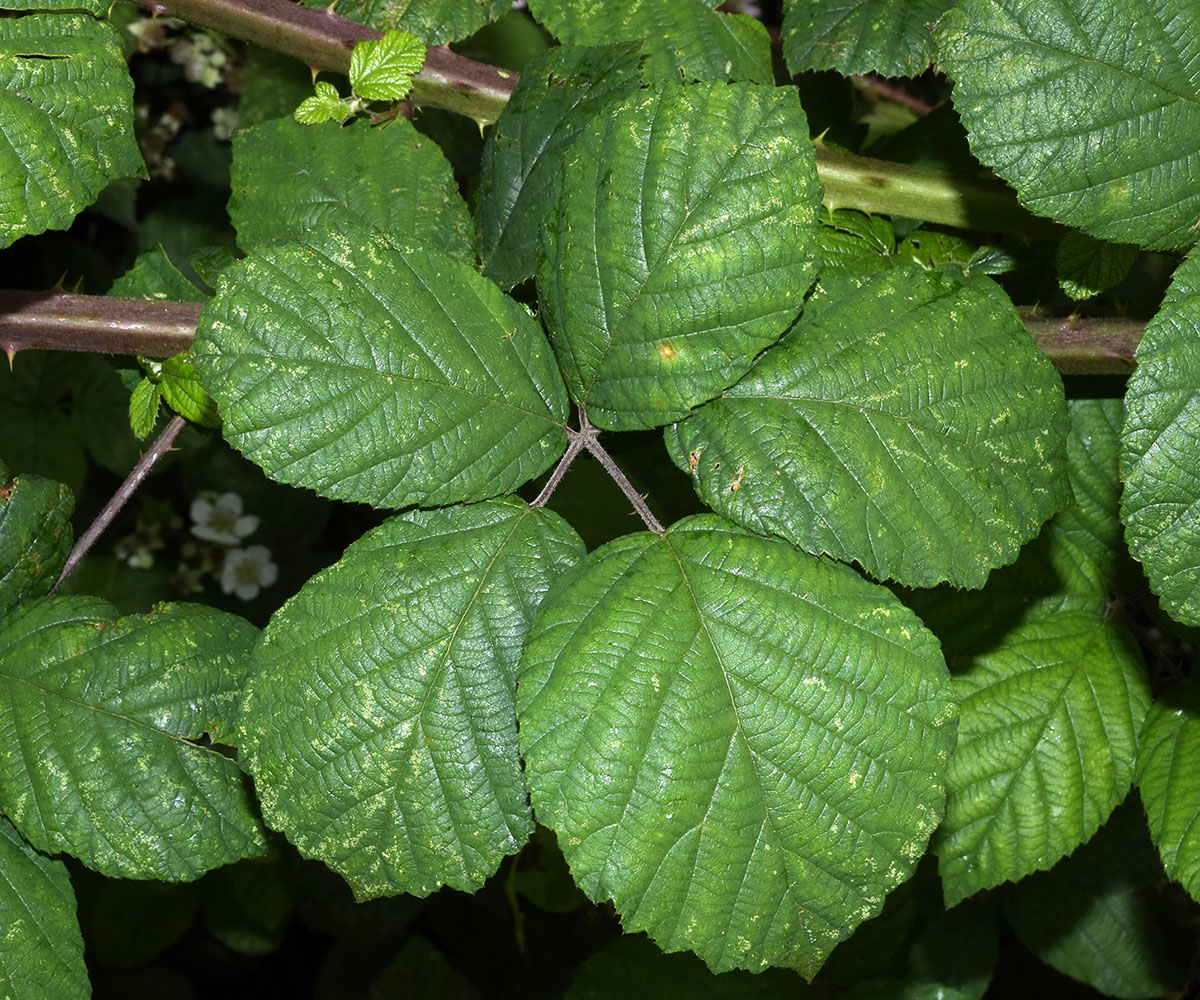
Leaflets are whitish-green felted below.
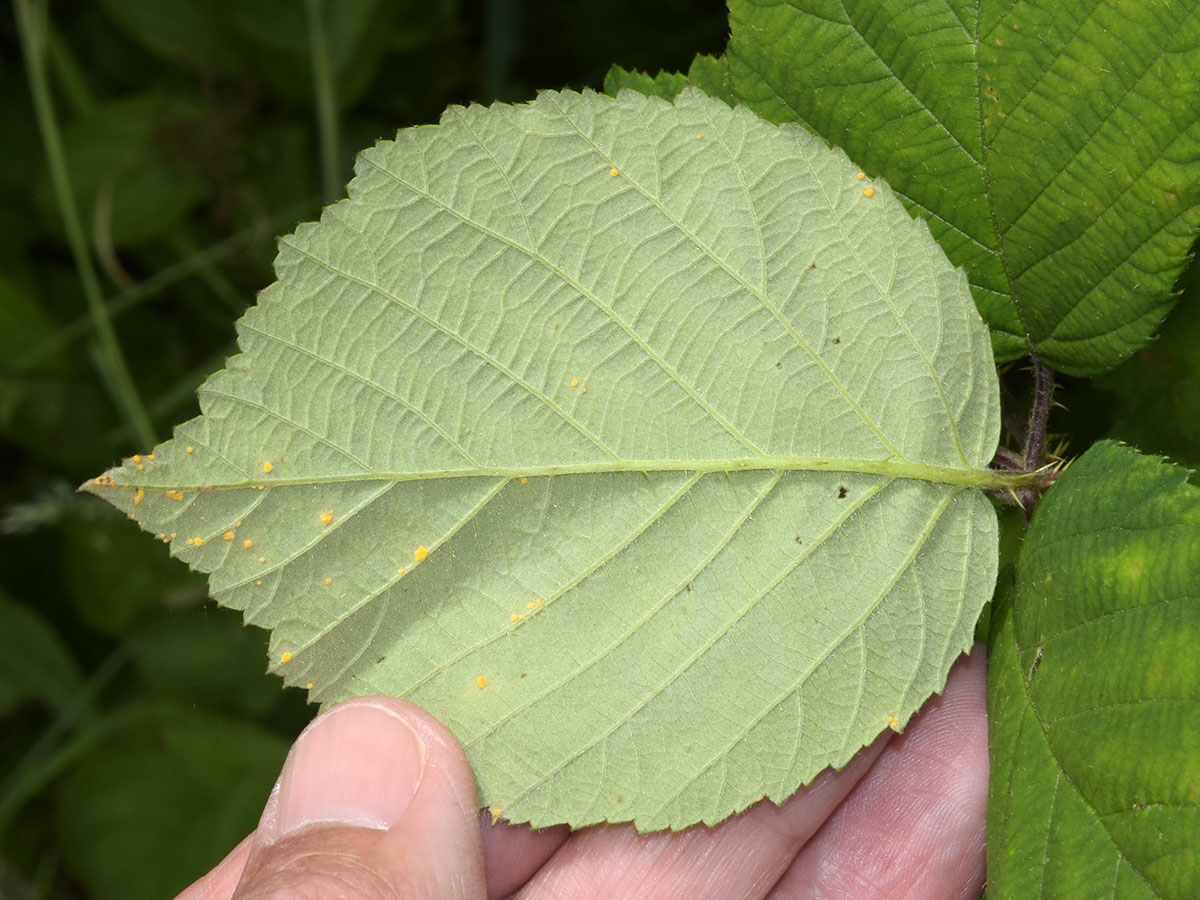
The first-year stem is bluntly angled with flat or slightly furrowed sides, turning reddish-purple when fully exposed to the sun and distinctly striate. This appears to be a rather creeping and climbing species with low-arching stems. The prickles which are restricted to the angles have broad, compressed reddish bases and greenish-yellow points; they are variable in length but generally shorter than or about the same width as the stem, straight or slightly curved and downturned. The stem hairs are fairly numerous and rather short but sufficient to describe this species as 'thinly hairy'. Stems also have occasional or rare short-stalked glands, small acicles and pricklets.
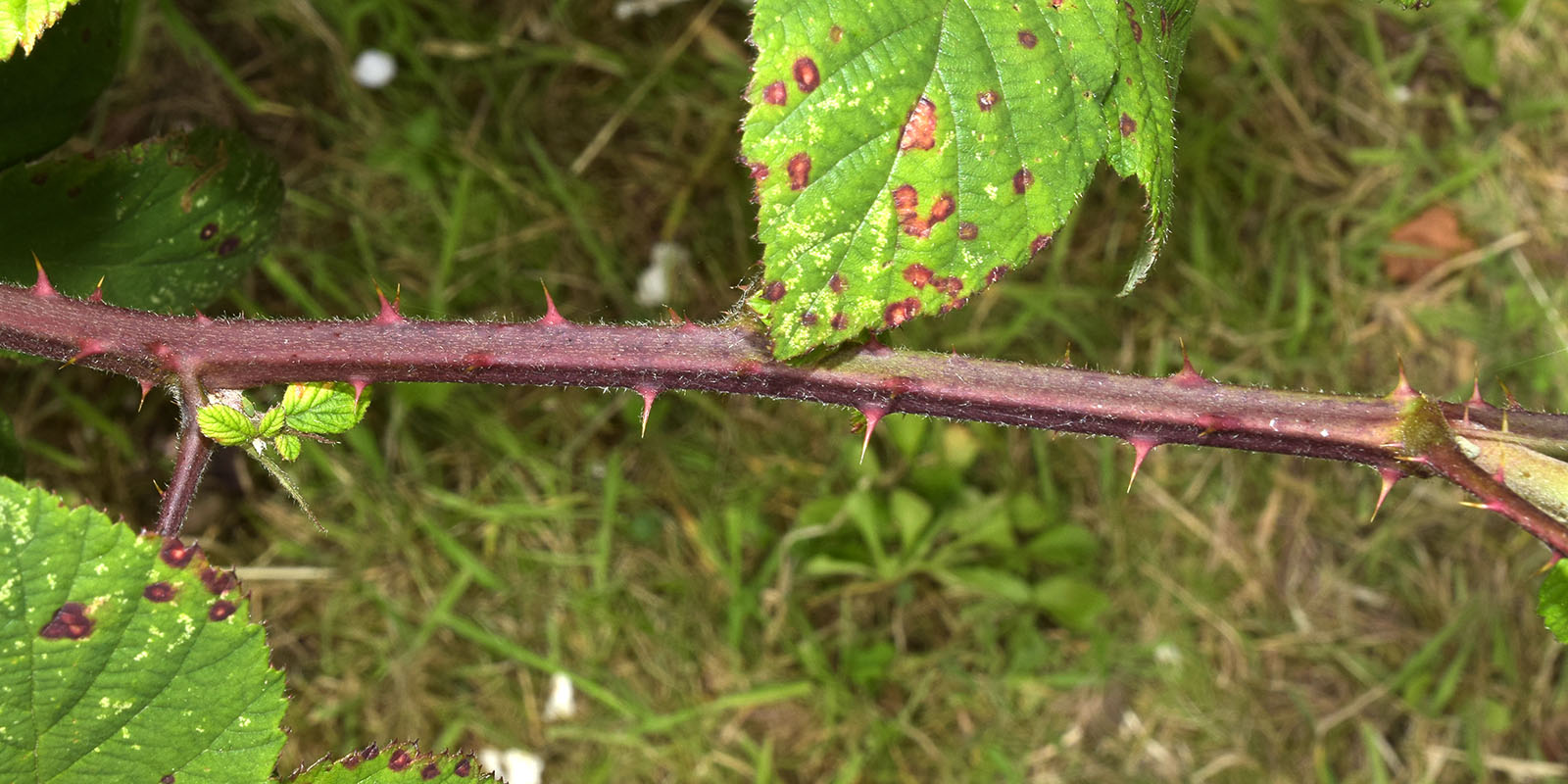
Stem close-up - note the pale striations.

